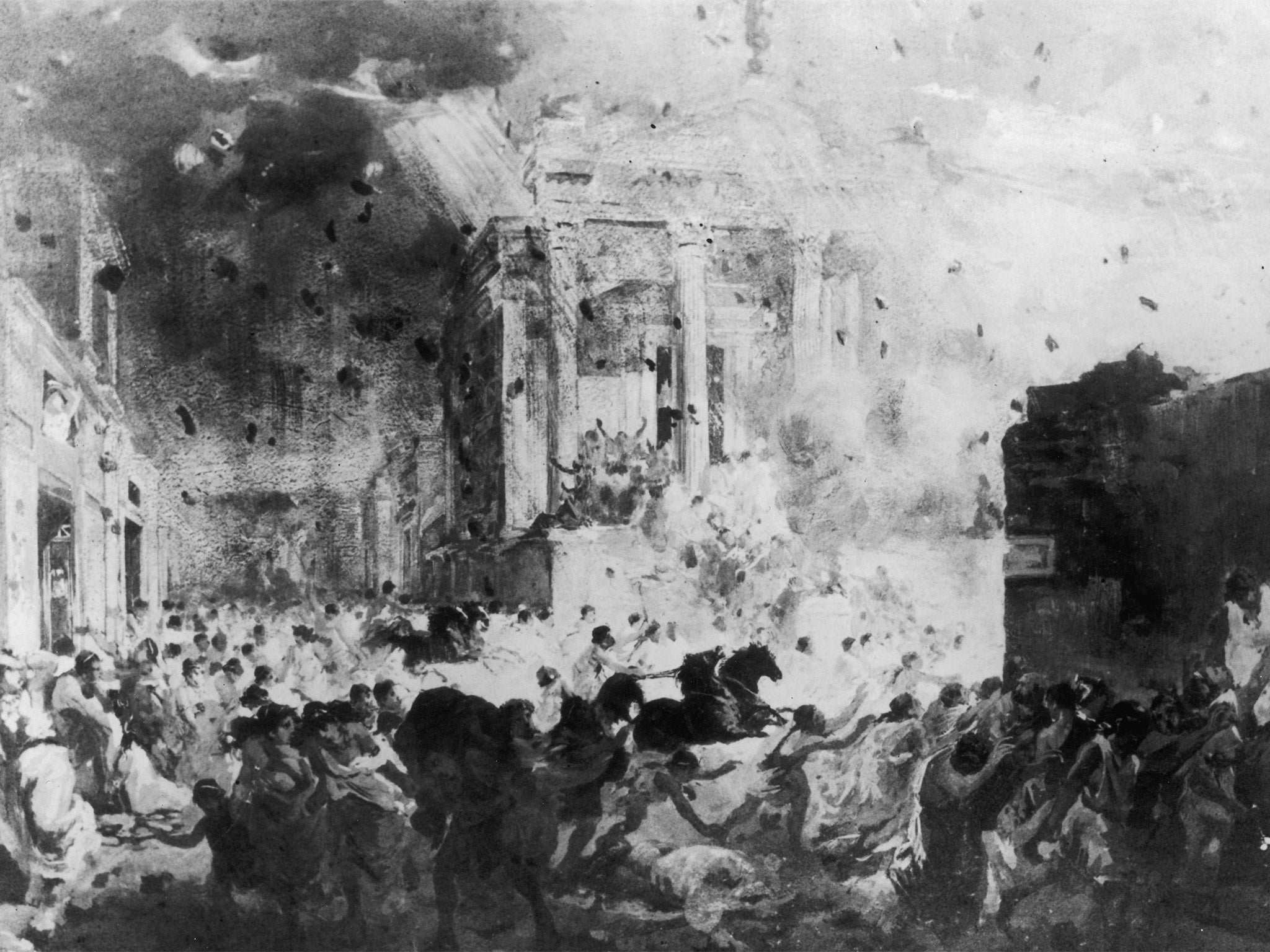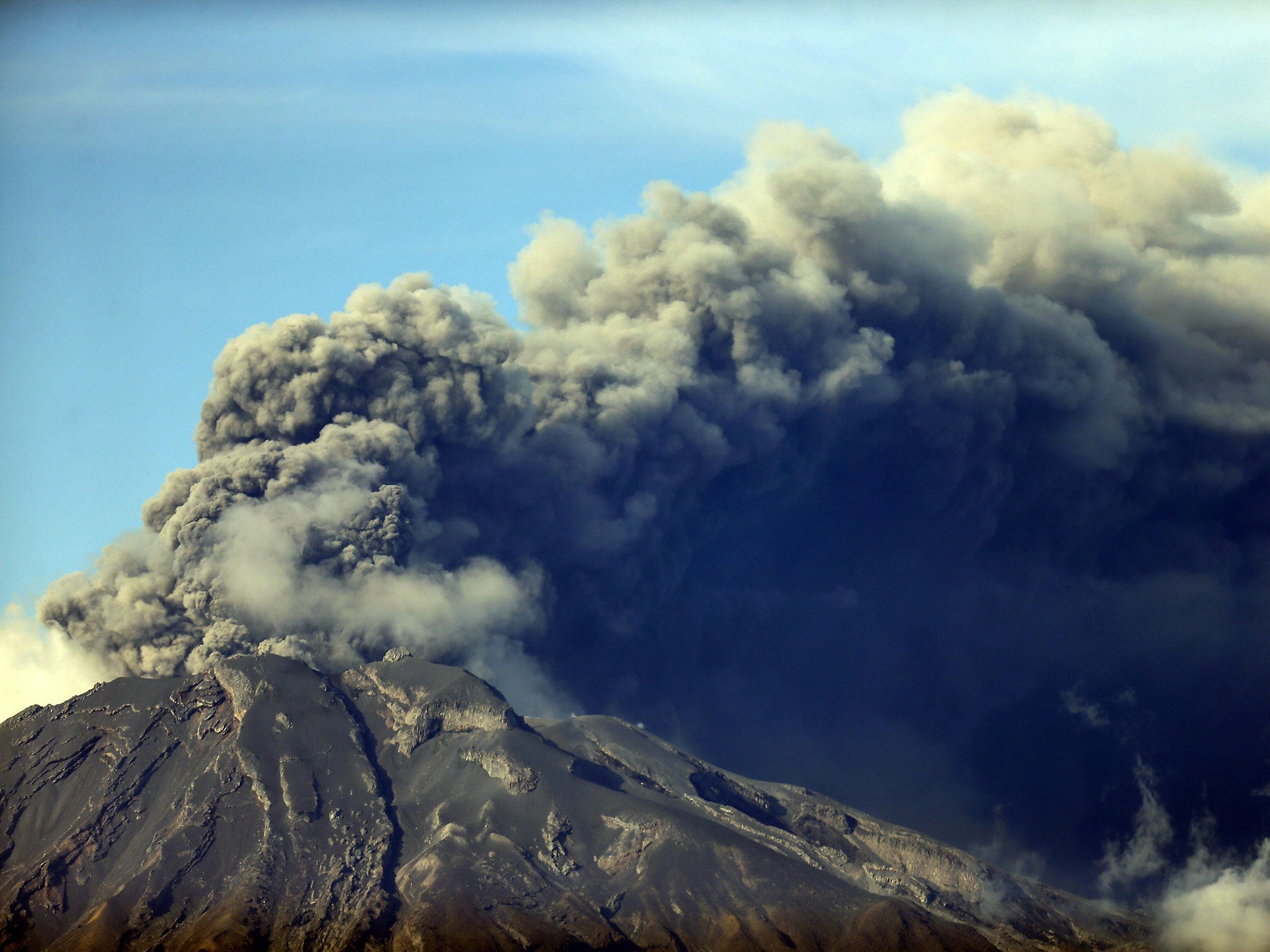Under a cloud: How volcanic ash brought civilisation to its knees
The Great Migration Period of the 6th century was influenced two separate volcanic eruptions in different parts of the world, a new study says

Your support helps us to tell the story
This election is still a dead heat, according to most polls. In a fight with such wafer-thin margins, we need reporters on the ground talking to the people Trump and Harris are courting. Your support allows us to keep sending journalists to the story.
The Independent is trusted by 27 million Americans from across the entire political spectrum every month. Unlike many other quality news outlets, we choose not to lock you out of our reporting and analysis with paywalls. But quality journalism must still be paid for.
Help us keep bring these critical stories to light. Your support makes all the difference.
One of the greatest blows to human civilisation in the first millennium was probably triggered by not one but two separate volcanic eruptions in different parts of the world, a study has found.
The Great Migration Period of the 6th century when Europe was convulsed by famine, plague and the decline of the Roman Empire was almost certainly influenced by the environmental catastrophe caused by two volcanic eruptions that occurred within a few years of each other, scientists said.
The findings have emerged from a re-evaluation of the climatic effects of nearly 300 eruptions that occurred over the past 2,500 years, which can now be dated more precisely than ever before, the researchers said.
“Using new records we are able to show that large volcanic eruptions in the tropics and high latitudes were the dominant drivers of climate variability, responsible for numerous and widespread summer cooling extremes over the past 2,500 years,” said Michael Sigl of the Desert Research Institute in Reno, Nevada and the Paul Scherrer Institute in Switzerland.
Volcanic eruptions can spew huge volumes of dust, ash and sulphate particles into the atmosphere, which can spread around the globe and block out incoming sunlight for months or even years at a time, resulting in significant cooling and climate change.
The study, based on analysing more than 20 ice cores from Greenland and the Antarctic, as well as northern hemisphere rings in trees dating back several thousand years, found that 15 of the 16 coldest summers recorded between 500BC and AD1,000 followed large volcanic eruptions.
“These cooler temperatures were caused by large amounts of volcanic sulphate particles injected into the upper atmosphere, shielding the Earth’s surface from incoming solar radiation,” Dr Sigl said.
The findings, published in the journal Nature, show that one of the most catastrophic climatic upheavals that occurred in the 6th century was preceded by two volcanic eruptions, one which probably occurred in North America and the other somewhere in the tropics.
Historical documents talk of a “mystery cloud” or veil of dust that fell over the Mediterranean region for about 18 months. The scientists suggest this was caused by an eruption in the northern hemisphere in around March 536.

The initial cooling caused by this event – which resulted in one of the four coolest summers – was intensified when a second volcano located somewhere in the tropics erupted four years later, which produced exceptionally cold summers throughout the northern hemisphere, the scientists said.
The pattern of cool summers persisted for about 15 years, leading to repeated crop failures and famine. The social upheaval this caused, and the mass migration that ensued, probably contributed to the conditions that led to the outbreak of the Justinian plague that spread across the eastern Roman Empire from 541 to 543, decimating the population of Europe and Central Asia, the researchers said.
Some historians have even suggested it may have influence the fall of key Mayan cites in Central America.
“This new reconstruction of volcanic forcing will lead to improved climate model simulations through better quantification of the sensitivity of the climate system to volcanic influences during the past 2,500 years,” said Joe McConnell, who developed a method of analysing the ice cores.
“As a result, climate variability observed during more recent times can be put into a multi-millennial perspective, including time periods such as the Roman Warm Period and the times of significant cultural change such as the Great Migration Period of the 6th century in Europe,” Dr McConnell said.
The new dating techniques for estimating precise time periods of past volcanic eruptions was possible because of a “distinctive signature” in the ice caused by a sudden increase in cosmic rays from deep space, said Kees Welten of the University of California. “We had a critical time marker we used to significantly improve dating accuracy of the ice-core chronologies,” Dr Welten said.
Big bang theory: World-changing blasts
c.1600BC
The island of Thera, now called Santorini, exploded in a massive eruption which caused localised climate change in the Mediterranean, leading to crop failures and famine and the demise of the Minoan civilisation on nearby Crete.
79AD
The eruption of Vesuvius in the bay of Naples, witnessed by Pliny the Younger, destroyed the nearby cities of Pompeii and Herculaneum.
Sixth century
Contemporary records talk of a ‘mystery cloud’ over the Mediterranean, crop failure and famine, followed by the Justinian plague that accelerated the demise of the eastern Roman Empire. Scientists now believe the events were the result of two volcanic eruptions, possibly in North America and the tropics.
1815
The eruption of Mount Tambora on the Indonesian island of Sumbawa was one of the most powerful in modern history, leading to the ‘year without a summer’ as far away as Europe.
Subscribe to Independent Premium to bookmark this article
Want to bookmark your favourite articles and stories to read or reference later? Start your Independent Premium subscription today.
Join our commenting forum
Join thought-provoking conversations, follow other Independent readers and see their replies
Comments